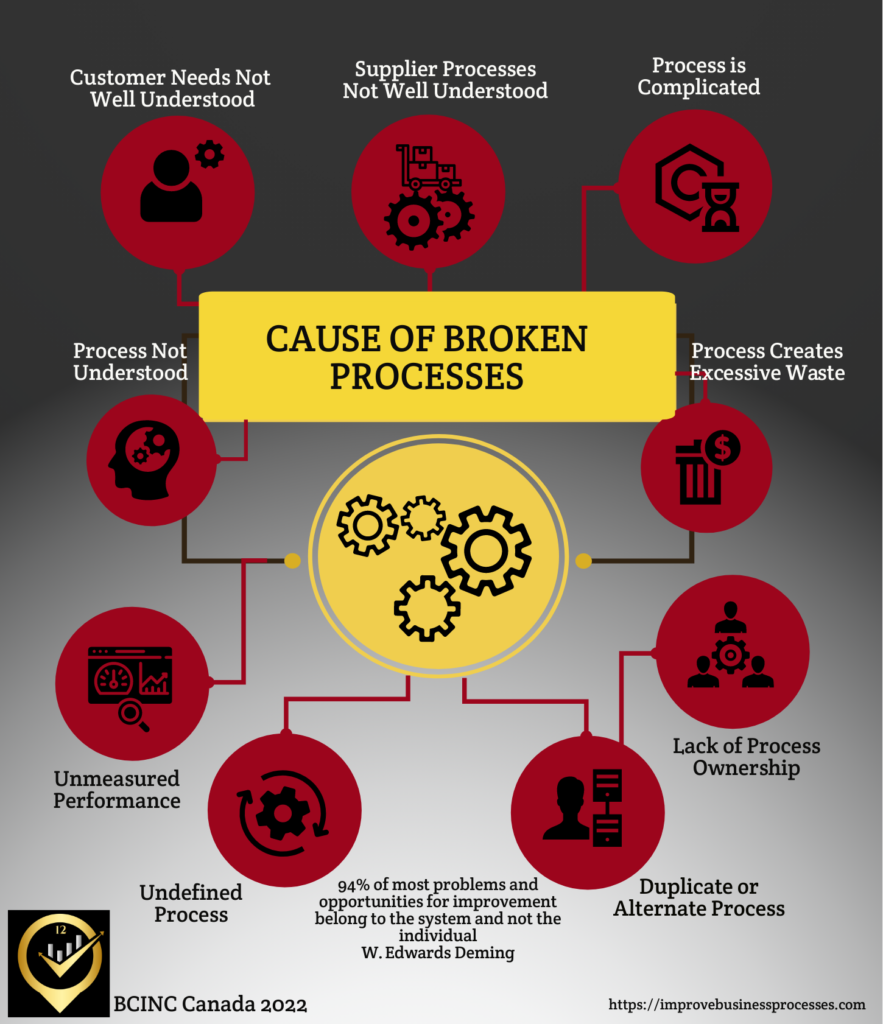What is the benefit of process mapping? Imagine business processes as a tangled set of Christmas lights—frustrating, confusing, and somehow always missing a couple of lightbulbs, just like business processes may be missing a step or two.
Thee solution – process mapping, your new best friend! Think of it as a GPS for your business, guiding you through each twist and turn, helping you avoid detours, and getting you where you need to go faster.
This article will show you how process mapping can help your small business unlock serious efficiency—without the headache, to streamline that chaos!
Process mapping is a visual representation of the steps involved in a business process. Its key benefit is to unlock efficiency in a business and helps them understand, analyze, and improve their workflows.
Having said that, there is a trickle-down effect of benefits packed into efficiency! Here are 7 of the main contributors. Practical examples are provided from the trades, small construction and renovation, survey and manufacturing. Each scenario can be applied to any small business.
What is the Benefit of Process Mapping? – 1. Clarity and Transparency
Clarity and transparency in process mapping are especially valuable in the trades or small construction businesses, where projects often involve multiple tasks and team members. By clearly mapping out each step of a job, everyone—from contractors to subcontractors—understands the workflow, avoiding confusion and delays.
For example, imagine a small construction company managing a home renovation. Without a clear process, the plumber might show up before the electrician finishes wiring, causing delays and miscommunication.
With a process map, the company can outline each phase: site inspection, demolition, electrical, plumbing, drywall, and finishing. This clear sequence ensures everyone knows their role and when to step in, preventing overlaps or wasted time.
Not only does this transparency help internally, but it also keeps clients informed. They can see the timeline and track progress, building trust. In short, process mapping brings clarity, reduces errors, and keeps construction projects on track.
What is the Benefit of Process Mapping? – 2. Identifying Inefficiencies
Process mapping can reveal redundancies, bottlenecks, and inefficiencies in workflows, which can then be addressed to streamline operations.
Process mapping is a powerful tool for identifying inefficiencies in the trades or small construction businesses, where time and resources can easily be wasted. By visualizing the entire workflow, you can spot bottlenecks, redundancies, or unnecessary steps that slow down progress.
Example
For example, in a roofing project, a small construction company might notice that workers frequently have to stop and wait for materials because they’re delivered late.

Through process mapping, the team can identify this issue and rework the supply chain process—perhaps ordering materials earlier or coordinating deliveries more efficiently. Another common inefficiency might be having skilled workers handle tasks that could be delegated, slowing overall productivity.
By identifying these inefficiencies, the company can reallocate resources, adjust timelines, or improve communication with suppliers, leading to smoother operations, lower costs, and quicker project completion. Process mapping shines a light on hidden problems, making it easier to optimize the workflow.
What is the Benefit of Process Mapping? – 3. Standardization
By documenting processes, organizations can ensure that they are followed consistently, which helps in maintaining quality and compliance.
Standardization through process mapping is critical in small manufacturing businesses to ensure consistent quality and efficient workflows. By documenting each step of a process, it creates a clear, repeatable set of guidelines that everyone follows, minimizing variability and errors.
Example
Consider a small furniture manufacturer producing custom wooden chairs. Without standardization, workers might assemble the chairs in different ways, leading to inconsistent quality or delays.
By using a process map, the manufacturer can standardize the production process—from cutting and sanding the wood to assembly and finishing. This ensures that each worker follows the same steps, regardless of who is handling the task.
Not only does this improve quality control, but it also speeds up production and makes training new employees easier, as they can follow the standardized process. Standardization reduces errors, improves efficiency, and ensures the final product meets consistent quality standards every time.
What is the Benefit of Process Mapping? – 4. Improved Communication
Process mapping enhances communication by creating a shared visual understanding of tasks, timelines, and responsibilities, which is particularly useful in the trades, where various teams and contractors work together.
Example
For example, in a small plumbing business handling a large residential project, miscommunication between the plumbers, electricians, and general contractors can lead to scheduling conflicts or mistakes.
A process map that outlines each phase—when the plumbing rough-in begins, when inspections are scheduled, and when finishing touches are applied—ensures everyone is on the same page.
By clearly defining each task and who’s responsible for it, process mapping reduces confusion and keeps communication channels open. It helps ensure that tradespeople know when to step in and complete their tasks, preventing costly delays and fostering a more collaborative, organized workflow.
What is the Benefit of Process Mapping? – 5. Enhanced Decision Making
Process maps provide valuable insights for managers and decision-makers to optimize resource allocation, reduce costs, and improve overall efficiency.
Process mapping enhances communication by creating a shared visual understanding of tasks, timelines, and responsibilities, which is particularly useful in the trades, where various teams and contractors work together.
Example
In a small plumbing business handling a large residential project, miscommunication between the plumbers, electricians, and general contractors can lead to scheduling conflicts or mistakes.
A process map that outlines each phase—when the plumbing rough-in begins, when inspections are scheduled, and when finishing touches are applied—ensures everyone is on the same page.
By clearly defining each task and who is responsible for it, process mapping reduces confusion and keeps communication channels open. It helps ensure that tradespeople know when to step in and complete their tasks, preventing costly delays and fostering a more collaborative, organized workflow.
What is the Benefit of Process Mapping? – 6. Training and Onboarding
They serve as useful training tools for new employees, helping them understand their roles and responsibilities within a process more quickly.
Process mapping is invaluable for training and onboarding in small construction renovation companies. New hires can easily understand their roles and responsibilities by following a clear, visual guide.
Example
A renovation company might use a process map to outline the steps involved in a kitchen remodel, from demolition to final inspection.
New team members can follow the mapped-out workflow, knowing exactly when to install cabinets or finish tiling. This reduces the learning curve and ensures that everyone follows the same proven steps, maintaining consistency in quality and efficiency, even as the team grows.
What is the Benefit of Process Mapping? – 7. Continuous Improvement
Process mapping is essential for continuous improvement initiatives like Lean, Six Sigma, and Business Process Re-engineering (BPR), as it sets a foundation for ongoing evaluation and refinement.
Continuous improvement is a key advantage of process mapping, especially for a small survey company striving to enhance accuracy and efficiency. By regularly reviewing and updating process maps, the company can identify areas for refinement and implement changes that drive better results.
Example
A small survey company might use process mapping to track the steps in their land surveying workflow, from initial client consultation to final report delivery. Through ongoing analysis, they might discover that data collection takes longer than necessary due to outdated equipment or inefficient procedures.
By updating the process map to include new technologies or streamlined methods, they can reduce data collection time and improve overall accuracy.
This approach ensures that the company continually adapts and improves its processes, leading to higher quality work, faster turnaround times, and increased client satisfaction.
Conclusion – What is the Benefit of Process Mapping
Finally, process mapping enables organizations to visualize, analyze, and improve their processes, resulting in increased efficiency, better communication, and improved decision-making.
Need assistance with process mapping for your small business? Contact BCINC today.
Related Articles
- What Causes Chaos in Business Operations? – Time to Stop It
- What is the Difference Between Systems and Processes? – Know Them
FAQ
What is the benefit of process mapping in small businesses?
Process mapping helps small businesses streamline operations by providing clear, visual workflows. It identifies inefficiencies, standardizes procedures, and improves communication among team members. This leads to better resource management, consistent quality, faster onboarding, and overall improved efficiency, boosting productivity and customer satisfaction.
References
Microsoft 365 Team (2022) How process mapping will help your business succeed https://www.microsoft.com/en-us/microsoft-365/business-insights-ideas/resources/succeed-with-process-mapping

